
The Ten Years' War, also known as the Great War and the War of '68, was part of Cuba's fight for independence from Spain. The uprising was led by Cuban-born planters and other wealthy natives. On 10 October 1868, sugar mill owner Carlos Manuel de Céspedes and his followers proclaimed independence, beginning the conflict. This was the first of three liberation wars that Cuba fought against Spain, the other two being the Little War (1879–1880) and the Cuban War of Independence (1895–1898). The final three months of the last conflict escalated with United States involvement, leading to the Spanish–American War.

Calixto García Íñiguez was a Cuban general in three Cuban uprisings, part of the Cuban War for Independence: the Ten Years' War, the Little War, and the War of 1895, itself sometimes called the Cuban War for Independence, which bled into the Spanish–American War, ultimately resulting in national independence for Cuba.

Lt. General José Antonio de la Caridad Maceo y Grajales was a Cuban general and second-in-command of the Cuban Army of Independence.

Valeriano Weyler y Nicolau, 1st Duke of Rubí, 1st Marquess of Tenerife was a Spanish general and colonial administrator who served as the Governor-General of the Philippines and Cuba, and later as Spanish Minister for War.
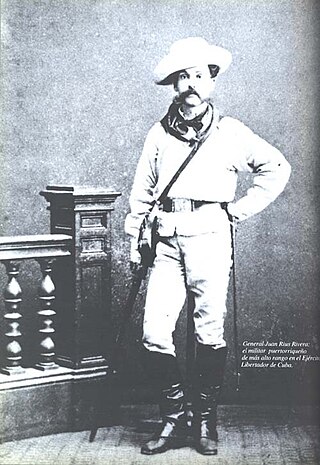
General Juan Rius Rivera, was the soldier and revolutionary leader from Puerto Rico to have reached the highest military rank in the Cuban Liberation Army and to hold Cuban ministerial offices after independence. In his later years he also became a successful businessperson in Honduras.

The Cuban War of Independence, also known in Cuba as The Necessary War, fought from 1895 to 1898, was the last of three liberation wars that Cuba fought against Spain, the other two being the Ten Years' War (1868–1878) and the Little War (1879–1880). The final three months of the conflict escalated to become the Spanish–American War, with United States forces being deployed in Cuba, Puerto Rico, and the Philippine Islands against Spain. Historians disagree as to the extent that United States officials were motivated to intervene for humanitarian reasons but agree that yellow journalism exaggerated atrocities attributed to Spanish forces against Cuban civilians.

The Intentona de Yauco of March 24–26, 1897 was the second and final major revolt against Spanish colonial rule in Puerto Rico, staged by the island's pro-independence movement in the second half of the nineteenth century. During the Intentona de Yauco, the flag of Puerto Rico was flown on the island for the first time.

The mambises were the guerrilla independence soldiers who fought for Cuba's independence from Spain in the Ten Years' War and Cuban War of Independence.

Federico Rodrigo Martín Sánchez Ochando y Chumillas was a Spanish general and politician who served as the 110th Governor-General of the Philippines, Deputy and Senator of Albacete, and Vice President of the Senate of Spain. Ochando was an illustrious and decorated general with a prolific career in politics. As a deputy and a senator, infrastructure projects and improvement of the Spanish military were among his key programs.
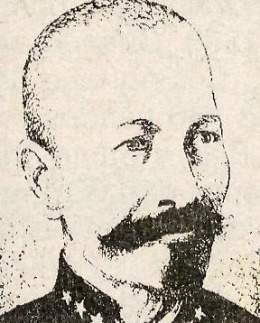
Jesús “Rabí” Sablón Moreno was a Cuban soldier and patriot of the 19th century.

Agustín Cebreco Sánchez, was a Cuban major general and politician of the Mambí Army.
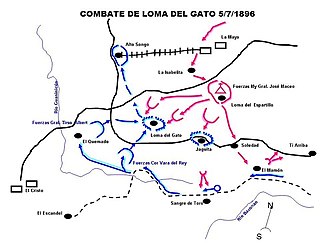
The Battle of Loma del Gato took place during the Cuban War of Independence on July 5, 1896 at Santiago de Cuba, Oriente Province. It is notable for the death of Mambí General José Maceo.
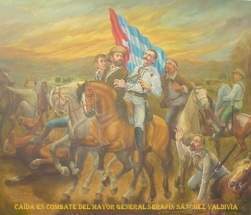
The Battle of Paso de las Damas was a battle of the Cuban War of Independence that took place on 18 November 1896 at the Santa Clara Province.

The October 9 Revolution was a successful revolt against the Spanish Empire in Guayaquil on October 9, 1820. It was led by the General Antonio José de Sucre and directed by Simón Bolívar. The revolt established a revolutionary junta and created the Free Province of Guayaquil, an independent state. The independence of Guayaquil revived the war of independence of the Real Audiencia de Quito as part of the Spanish American wars of independence. Prominent events in the revolution include the uprising of the Spanish garrison in the city of Guayaquil and the control of the Pacific by the Liberating Expedition of Peru, under the command of José de San Martín.

The La Reforma Campaign was a campaign of the Cuban War of Independence which was waged for 16 months with the Cuban forces under the command of Máximo Gómez against the Spanish forces under the command of Valeriano Weyler. Despite the Spanish outnumbering the Cuban forces by 40,000 to 600, Gómez's guerrilla warfare tactics as well as the weather caused over 40 Spanish soldiers to die each day throughout the campaign. His approach was to divide his forces into tiny guerrilla groups and fight alone with his General Staff while continuously moving.
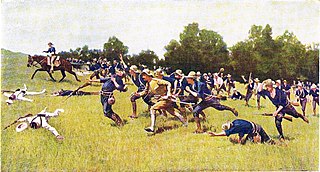
The Second Eastern Campaign was a military campaign that took place between August 1 to 12, 1898, in the Oriente Province of Cuba during the Cuban War of Independence. It was the shortest military campaign of the entire war and it was the one that marked the end of Spanish reign in Cuba and the Spanish Empire in Latin America.

José Manuel Capote Sosa (1836-1934) was a Cuban Major General and politician who participated in the Cuban War of Independence. He was known as the mayor of Bayamo and the brother of Colonel Gonzalo Capote of the Cuban Liberation Army.

The Capture of Las Tunas was a military engagement of the Cuban War of Independence. It took place from August 27 to 30, 1897 at Las Tunas, Oriente.
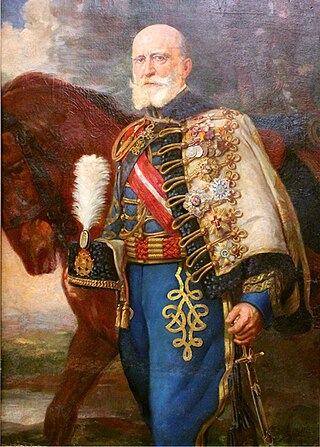
Salvador de Arizón y Sánchez-Fano (1853–1921) was a Spanish Lieutenant General who participated in the Cuban War of Independence and the Philippine Revolution. He was a member of the House of Arizón as well as the Directorate-General of the Civil Guard from June 26, 1917, to December 6, 1918.


















